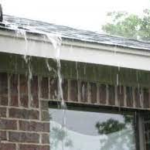One of the strongest building materials is created when cement and water are blended together smoothly. This mixture can be created using a shovel however, you will soon be searching to get a concrete mixing gear due to the exhaustion that comes with mixing concrete by hand.
Having the proper concrete drill mixer attachment is the key to creating the best mix. Your combination will stir easily if you purchase a nice drill. With an excellent mixer attachment, the drill will take care of the rest.
The precise drill power required to operate a concrete mixer depends on a variety of features. These range from speed, and mixing capacity to the blades of the mixer attachment. Before delving deep into all that, let’s get a hang of what a drill is.
What is a drill?
Drills can mean different things depending on their use. Most people know drills as devices used in drilling holes while some others know them as screw driving devices. They are not wrong. In fact, drills fulfill very many kinds of functions including mixing concrete. In this article, we will focus on the mixer drill.
Mixer drills are devices designed with paddled attachments or blades that help in the quick and easy mixing of materials like paints, plaster and concrete. To ensure that the mixture is even and lump-free, mixing paddles contain moving blades that have varying power and speeds.
What type of drill do you need for concrete mixing?
Oftentimes, people confuse the standard drill with dedicated mixer drills. Standard drills have around 13 mm chucks and are used in drilling holes and fitting screws in walls. This could work as a mixer drill with the appropriate attachment.
Low viscosity materials like paints can get a good mix when using standard drills but be certain that such drills won’t work for concrete mixing.
Also see: How to use an Impact Driver: A Simple Guide
Concrete has a higher viscosity and requires longer mixing times. Standard drills are built for short bursts and could overheat and wear out when used in mixing concrete. This will not only leave your machine broken but will also leave you exhausted.
Dedicated mixers are the most optimal drill for mixing concrete. They are designed with a greater engine cooling mechanism that enables them to power for longer without overheating. They also have more power ranging from 250 to 8000 watts. This allows for greater torque.
Features to consider in selecting a mixer drill
1. Speed of the drill for concrete mixing
The speed of mixer drills depends on the motor speed in terms of motor rotational speed and per minute revolutions. A suitable concrete mixer should have up to 700 rotational speeds per minute. A mixer with 500 rotational speed at its maximum can also work.
Drills with control gears are better. The drill with gear control is used for alternating speeds which can be used to increase or decrease speed rotation when necessary. Usually, such drills with control gears are better because they create a more even mix without creating a splatter.
2. Blades and paddle
Drill attachments are accessories that are attached to the end of a drill. Blades and paddles are usually connected to the mixer drill and are responsible for making the rotations according to the command from the drill machine.
These blades make mixing thick concrete manageable. Just make sure that the blade or paddle fits with your drill.
Pending on the style you want, blades and paddles can move up and down while rotating, giving an even smoother mix.

3. Mixing capacity of the drill
Mixing capacity is a crucial feature because it determines how much of the mixture can be blended in a given period of time. For example, a mixer with a 6-kilo capacity will be able to mix more concrete than one with a 2-kilo capacity within the same time period.
Drill for concrete mixing comes with directions on how much can be mixed at once. It still helps to be mindful of how much you plan to mix at once because cheaper drills are still prone to overheating and could end up broken.
You may also like: How To Build A Concrete Septic Tank
How powerful should a drill for concrete mixing be?
The answer will depend on the quantity of your mixture and its viscosity. Industrial settings require a much higher power drill than maybe a home or office setting.
Concrete mixtures with higher viscosity such as in masonry will require a more powerful drill that has at least 500 rotations capacity. For optimum performance, a minimum of 1300 watt capacity drill for concrete mixing can give the best results.
Since larger quantities mean longer mixing times, having a higher power drill will mean better mixes and more durable equipment to serve you better for longer.



